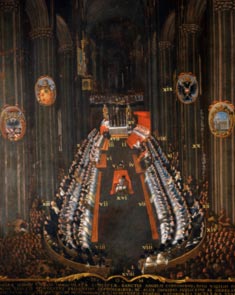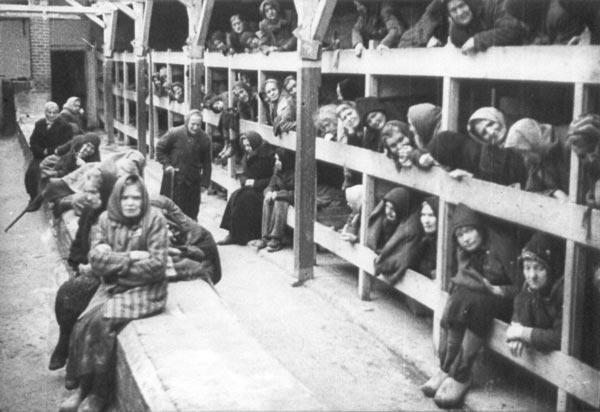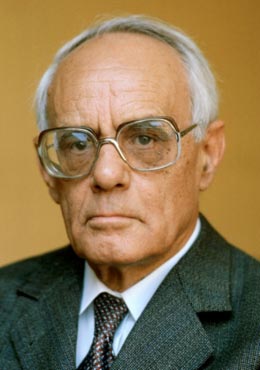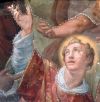Deacons have been a part of the Church since earliest days
Early Scripture makes reference to a form of the diaconate
This month marks the 40th anniversary of the arrival of the diaconate in English Canada. But the history of the diaconate actually dates back to the earliest days of the Church.
The first mention of the diaconate comes right out of Scripture, said Deacon Peter Lovrick, director of the formation program for the diaconate at Toronto's St. Augustine's Seminary, who pointed to references from St. Paul in Romans, Corinthians and Timothy in the New Testament.
But the most substantive reference to the diaconate is Acts 6:2-7, which directly refers to St. Stephen as the first deacon:
"And the twelve called together the whole community of the disciples and said, 'It is not right that we should neglect the word of God in order to wait on tables. Therefore, friends, select from among yourselves seven men of good standing, full of the Spirit and of wisdom, whom we may appoint to this task, while we, for our part, will devote ourselves to prayer and to serving the word.'
"What they said pleased the whole community, and they chose Stephen, a man full of faith and the Holy Spirit, together with Philip, Prochorus, Nicanor, Timon, Parmenas and Nicolaus, a proselyte of Antioch.
"They had these men stand before the apostles, who prayed and laid their hands on them."

The closing session of the Council of Trent is depicted in an illustration from the 17th century.
- CNS photo/courtesy of Art Resource
Lovrick said some scholars dispute whether these words are specifically pointing towards a diaconate, though Stephen went on to become the first martyr of Christianity, and his name lives on as the patron saint of deacons.
"Many of the early fathers of the Church wrote about deacons," Lovrick said. "Deacons in the early Church had a pretty prominent role, eventually taking upon administrative and juridical positions in the Church.
"They were very closely connected to the bishops… but they were a distinct group. They were not priests."
After several centuries of deacons working closely with bishops, things started to change, said Lovrick.
"They brought in the various orders," he said. "It began to look that the deacon was a step to be a priest, and it became that way."
Today, there is a transitional diaconate, the step immediately before one becomes a priest, and the permanent diaconate, for those who do not go on to the priesthood. But before these were established as distinct ideas, the permanent diaconate began to wane by 1000, and soon disappeared in the western Church.
The Council of Trent, a council of ecclesiastical and theological experts who met in Trent to discuss important matters in the Catholic Church, was the first occasion after the original decline of the diaconate that the idea of a renewal was brought up. In 1563, during the council's 23rd session, came the call for a restoration of the diaconate, a movement that was stirred in the Eastern Catholic Churches, where the permanent diaconate had not been quite as weakened.
"The original proposal that went into the council was very ambitious and spoke a great deal about the separate order," Lovrick said. "But there were other things going on in Europe. Nothing really happened until the 20th century.
"For 500 years, (the restoration) was on hold."
Of all places for the diaconate to begin its revival, it was the Nazi concentration camp Dachau during the Second World War. A small number of Catholic priests were detained there, in a cellblock called the "priest block." And it was there the rumblings of a new diaconate were formulated. Frs. Otto Pies and Wilhelm Schamoni spearheaded the movement.
"They saw Europe crumbling around them," Lovrick said. "They saw the ravages of war, they saw the attack on the Church.
"They had faith that we were going to get through this, but when we got through this, we would be in the ruins and things would need to be rebuilt."
These priests began to write about bringing back the diaconate envisioned at Trent, about how deacons could help the priesthood restore faith after the war. These thoughts were published, and another mind began to write about similar ideas — Fr. Karl Rahner, the great theologian.
"Rahner talked about how there were lots of people in the world doing diaconal things, but they weren't given the sacramental grace of ordination to do it," Lovrick said. "It only made sense to empower people to do what you were asking them to do. That was his basic argument."

The Dachau concentration camp was the unlikely place where talk about the revival of the permanent diaconate evolved. - CNS photo/Reuters
Meanwhile, a charitable movement in Germany called Caritas was getting very involved with restoring the diaconate by publishing articles and hosting open forums for discussion. By 1962, efforts by several groups and individuals came together with a petition for Pope John XXIII, which made its claim:
"Well-known theologians have studied the matter from the historical, theological and practical points of view, and have arrived at the consensus that the proposed restoration (1) is possible, (2) would bear great fruit in the interior life of the Church, and (3) would do much to foster the cause of unity among Christians which Christ so dearly desires."
What followed were seven questions and potential issues of reinstating deacons, and reasons and answers behind all of them; this petition set into motion the events of the Second Vatican Council. Vatican II, much like the Council of Trent, discussed the Church and its place in the modern world. It ran from 1962 to 1965, and the restoration of the diaconate was a solid fixture of discussion.
But the council did something that Trent didn't — it followed through on the diaconate discussion.

"In the (Second) Vatican (Council), 101 propositions were specifically on the diaconate," Lovrick said. "There was a lot of back and forth, some cardinals in support… others against it. But by 1964, the dogmatic document of the Church, Lumen Gentium, (had a) very clear section on the deacons calling for the restoration on the diaconate."
Four years later, in 1968, came the first ordination ceremonies of deacons since the Reformation — fittingly, in Germany. Several other countries, including Colombia, followed suit, so that by 1970 there were almost 100 permanent deacons around the world.
The Canadian Conference of Catholic Bishops met in Winnipeg in 1968 and voted overwhelmingly to ask Rome for permission to restore the diaconate in Canada. By 1969 it was granted.
Toronto came aboard in 1972, thus forming the first class of permanent deacons in the archdiocese of Toronto, who were ordained two years later. To date, 272 men have been ordained deacons in Toronto.
[issuu width=600 height=360 backgroundColor=%23222222 documentId=120910160538-19846c86f786424e98153821bd480e84 name=diaconate username=catholicregister tag=anniversary unit=px v=2]
40th Anniversary: The Diaconate Celebrates a Milestone
- Click here to view the latest catholicregister.org stories about the 40th Anniversary of the Diaconate
[issuu width=600 height=360 backgroundColor=%23222222 documentId=120910160538-19846c86f786424e98153821bd480e84 name=diaconate username=catholicregister tag=anniversary unit=px v=2]
The Catholic Register is proud to celebrate the 40th Anniversary of the Permanent Diaconate Program in the Archdiocese of Toronto.
There are two ways to read the articles.
You can view the articles in the embedded reader above as they were printed in the newspaper . Click the "Expand" button in the centre of the player to go full-screen for the best reader experience. You can then zoom in on specific pages with the magnifying glass button or by using the scroll wheel on your mouse. Click to the side to navigate through the pages and press the ESC key on your keyboard to exit.
You can also enjoy the articles on CatholicRegister.org. Over the week, we'll be adding articles below for readers to browse.


